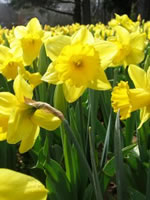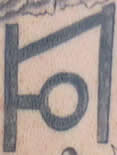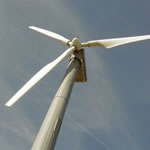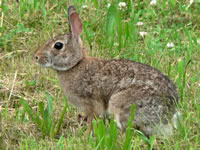An interesting word I heard yesterday on Raidió na Gaeltachta was tonnmharcaíocht or surfing – literally “wave riding”. I hadn’t heard it before, but was able to work out the meaning from its component words. Another word for this kind of surfing is tonnscinneadh (wave glancing / skimming). Surfing the internet is scimeáil ar an Idirlíon, and sciméail also means to skim (milk).
Words related to marcaíocht (riding, to ride / drive / lift), include marcach (rider / horseman), marcaigh (to ride) and marcshlua (cavalry). The root of these is marc, the Old Irish word for horse, which is related to the Welsh march, the Cornish margh, and the Breton marc’h, all of which mean stallion.
The words for mare in Old High German (marah), Norse (marr), and Anglo-Saxon (mearh) as well as the English words mare and marshal are also related and can be traced back to the Proto-Indo-European *mark (horse).




